Glittery red shoes remind artist and teacher of her glamorous days as “Lady Harriet,” dancer and blues singer at her own nightclub in Guatemala
Though she moves more slowly now, and the form-fitting gown and sparkling red stilettos have been replaced by more comfortable clothing, 89-year-old Harriet Sebastian is still a performer. Resting in the satin-draped armchair where she spends most of her days, Sebastian paused mid-story and turned toward the credenza where her dancing shoes were hanging. “I can’t wear my red shoes anymore, but I respect them.”
After a well-timed pause, she added, “I’ve had a good life. Some magical things happened.”
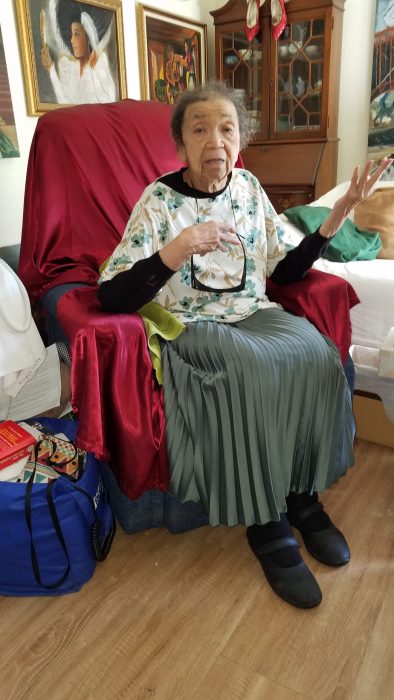
Sixty years ago, Sebastian was a blues singer in a nightclub she owned in the back hills of Guatemala. Every evening at 7, “Lady Harriet,” dressed in a sequined gown that showed off her curves, would slowly descend the winding staircase that connected her upstairs bedroom with the cabaret. By the time she reached the bottom step, the drunken Australian mercenaries and other male patrons that frequented the bar were shouting and banging on the tables, keyed up for another evening of song, dance and drink.
Performing was not her only passion; she often identifies herself as a painter. Her own artwork hangs on the walls of the living room and is stacked in the corners. The largest of these, “The Bridgeman,” commemorates the men who built the Bay Area’s bridges. Sebastian has also been a teacher, a poet, a bar owner, a saleswoman and remains an inveterate storyteller and advocate for world peace. Examples of her artwork can be found on her website.

Sebastian was born in 1932 in Cincinnati, Ohio, the second child and oldest daughter of seven: five brothers and a much younger, emotionally disturbed, sister. Her father, she said, was “a successful businessman, the first Black industrialist in the area. He was so successful, White men listened to him.” But he was also extremely volatile. “You never knew how he would be.” Sebastian attributes his temper to “having to deal with White men.”
Head of the household
Her mother took care of the children — until she decided she had had enough and left. “Everyone cried when she packed her bag and got in the taxi and drove away. They wanted a mommy,” Sebastian said. “I wanted one too.”
But it didn’t work out that way. Her father wasted no time in appointing Sebastian head of the household. “I was only 12, I didn’t even know what ‘head of the household’ meant. I knew how to look good and how to have a good time,” she said. “I didn’t even know how to cook. My mother never allowed us in the kitchen when she was making dinner.”
The five boys were a handful. “They started fires in three of our homes playing cowboys and Indians.” But the boys fell in line when Sebastian took over; they never did that again after she was put in charge.
Although she had no idea how to run a household, she did so well she remained in charge for the next six years. “I ran a democratic house. I’d ring the bell and the children would bring their chairs to the dining room and we’d gather around to resolve problems.We were not angels, but we always solved the problem.”
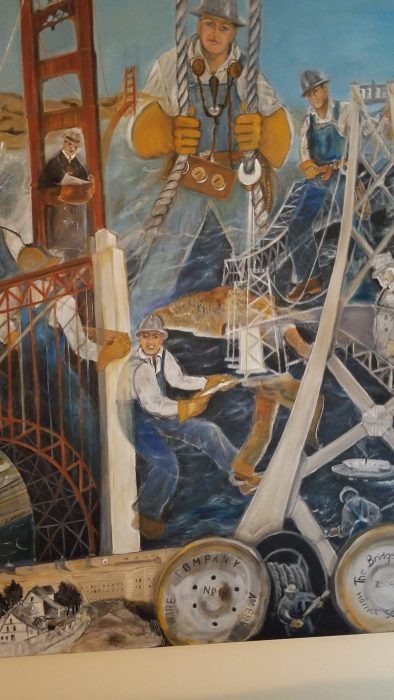
One problem they couldn’t solve was her father’s marriage to the woman across the street, a high school home economics teacher with very definite idea about the proper way to do things – and a strong dislike of Harriet. When the tension became too great, Sebastian, then 18, moved out.
New life in Chicago
Hearing that jobs – and a good time – were plentiful in Detroit, Sebastian decided to give it a try. She supported herself by selling radio time to Black churches. A few years later, when a co-worker decided to move to Chicago, Sebastian joined him.
Chicago offered other opportunities. Sebastian enrolled in Chicago Teachers College while continuing to sell radio time. The Chicago Public School System, where Sebastian taught, was “the worst school system in the country,” she said. “Classes were overcrowded, discipline often non-existent, and teachers were leaving in droves.” Fortunately, those years as “head of household” had equipped her to face classrooms of 50 and more.

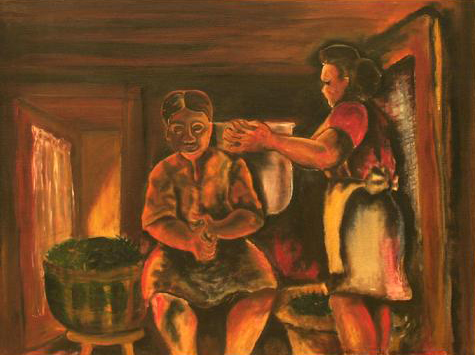
Summers offered a welcome break and were spent auditing art classes at The Art Institute of Chicago and an apprenticeship to masters such as sculptor Mustafa Naguib. Summers also allowed her to travel to Paris where she studied art, met interesting people and was tutored by master printmaker Jean-Claude Reynal at the Atelier 17 art school in Paris. “Paris allowed me to breathe. Our country was messed up with racial stuff. (In America), I was drenched in prejudice from Whites and Blacks.”
Family matters, which Sebastian declined to discuss, prompted a return to the U.S.
A bar in the boonies
The 1970s found Sebastian in Guatemala, the owner and headliner of the 4th Avenue Club. “I was always restless, and a friend told me about a bar in Guatemala that was available for only $10,000.” Eager to try something new, Sebastian used her scant savings to purchase the bar.
The bar, she said, was in the middle of nowhere with no way to get there. She had to hire a crew to build a road and remodel the space. But that was only the first of her problems. Though drawing a crowd was never a problem, “everyone I hired was stealing from me. They all wanted something from me.”
Her patrons, “all gorgeous men,” she said, “whooped and hollered throughout the evening. We collected their guns before they came in. I had to learn to be tough and evil.” At 4 a.m., when the bar closed, the action moved outside. Afraid to sleep amid the commotion, it didn’t take Sebastian long to realize she was “in the middle of that whole mess and I’m not enjoying myself.” She got out while she still had money for a plane ticket.
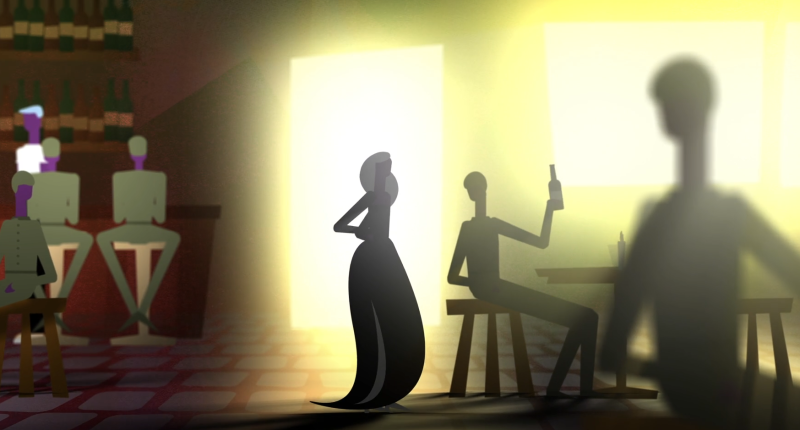
Then it was back to America and San Francisco, where she continued painting and performing.
Money has never been Sebastian’s greatest concern, and as she will readily admit, she never had much. But she found ways to make ends meet while having a good time.
Private shows and poetry
She’d give shows in private homes. The word would go out, she recounted: “Lady Harriet is performing and she’s selling scarves.” The rooms would be full of her women friends. Sebastian would sing, read some of her poetry and tell stories. The performance ended with Sebastian flinging scarves she made from Parisian cloth and the women rushing to grab them. “It was like a frenzy,” she said.
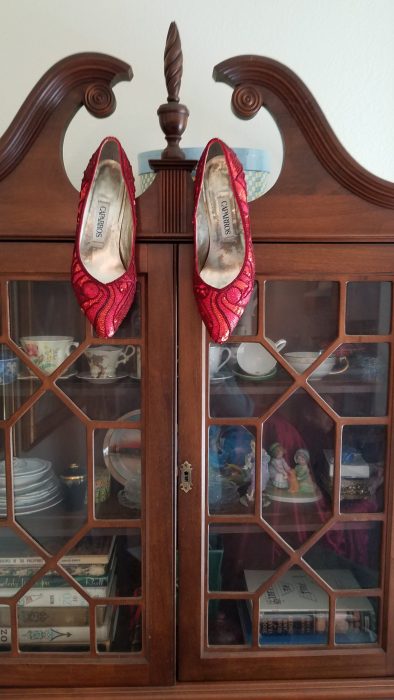
The last years have been quieter. Twenty-five years ago, Sebastian moved into a one-bedroom apartment in the Dorothy Day Community senior building on the edge of the Tenderloin where she occasionally teaches English to her Chinese-speaking neighbors.
But though she’s sedentary, Sebastian said she is committed to creating a better world for the next generation. Addressing the fifth-graders at the San Francisco Friends School recently, Sebastian read from a “no more war” petition she wants all peoples and nations to sign and encouraged the students to work for world peace.
Closer to home, she’s concerned about the homeless and getting someone to plant flowers in the unused planter in her building’s enclosed front patio.
Though life is difficult now, as it was for many of her younger years, and she’s in more pain, Sebastian told a visitor: “I’ve had a wonderful life. Sure, some bad things happened, but no one was to blame.” Surrounded by her paintings, with those red shoes glittering from the credenza, she reflected on the lessons of her life, saying, “We each have a unique gift.”






Rowena Richie
Thank you, Judy, for highlighting Lady Harriet and her inimitable voice. And thank you for linking to our Artists & Elders work!
Gladys W Kupper
Harriet Sebastian is a remarkable woman who creates beauty out of almost nothing. Thank you for her story.